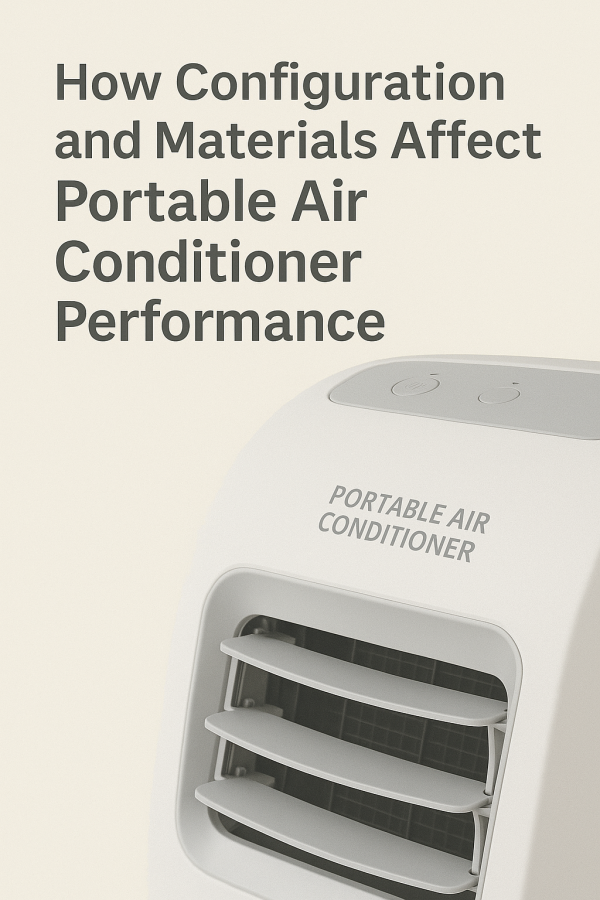In today’s global climate, staying cool isn’t just a comfort—it’s a necessity. As energy efficiency and indoor air quality gain attention, the Portable Air Conditioner has emerged as a flexible, space-saving cooling solution for homes, offices, and temporary setups. But did you know that not all portable AC units are created equal?
This article explores how the configuration and material composition of portable air conditioners influence their cooling performance, energy efficiency, and durability.

1. Configuration: Layout Determines Airflow Efficiency
The internal layout of a Portable Air Conditioner affects how quickly and efficiently it cools a space. Key configuration elements include:
a. Single-Hose vs. Dual-Hose:
· Single-hose models are simpler and more affordable but can create negative pressure in a room.
· Dual-hose units are more efficient in large or hot environments because they pull in outdoor air to cool the condenser and then exhaust the warm air.
b. Fan Placement & Vent Design:
· Smart vent design enhances directional airflow and room coverage.
· Some models feature oscillating vents that circulate cool air more evenly.
c. Compressor Positioning:
· A well-placed compressor with minimal vibration reduces noise and improves long-term reliability.
2. Materials: The Foundation of Performance and Durability
The material choices in a Portable Air Conditioner don’t just affect appearance—they directly impact performance:
a. Casing:
· ABS plastic is lightweight and cost-effective but may degrade over time under UV exposure.
· Metal housings are more durable and better at heat dissipation but heavier and more expensive.
b. Heat Exchanger Fins:
· Aluminum is common for fins due to its good thermal conductivity.
· Copper fins offer superior conductivity and anti-corrosion performance, though they cost more.
c. Insulation and Seals:
· Durable rubber seals prevent air leakage and moisture build-up.
· High-quality insulation minimizes energy loss.
3. Choosing the Right Portable Air Conditioner
When selecting a Portable Air Conditioner, consider more than just BTUs. Evaluate the layout, fan features, and build quality:
Q1: Do you need mobility?
A1: Option for lighter materials and a compact design.
Q2: Are you cooling a large room or server area?
A2: Consider a dual-hose unit with high-grade exchangers.
Q3: Want to save on electricity?
A3: Look for models with variable speed compressors and intelligent thermostats.
Final Thoughts
A Portable Air Conditioner is an investment in comfort, flexibility, and energy efficiency. By understanding how configuration and materials affect cooling power, you can make a smarter purchasing decision that fits both your climate and lifestyle needs.
If you’d like help customizing a portable AC for your home or business, or want to explore our product range, visit UnitedStar for expert advice and tailored solutions.


